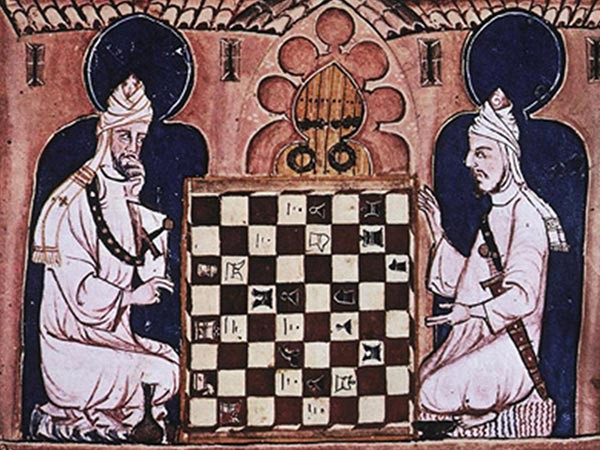Standing through the undercurrents of our time: The Origins of Chess

Today, maybe more than ever, I feel as if we’re more than divided as a society. Each one of us, wherever we are, are facing a pandemic today that doesn’t consider race, religion, political views, or sect – shouldn’t we be united by facing a common enemy? Or rather, are we more interconnected than we think? Media and news outlets at large distort the reality of what we want to see and represent the nominal percentage of bad in this world, but underneath it are we more connected than we think?
History has shown us that Homosapiens hunted and gathered in like-minded homogenous tribes. What does that look like today? Many of us live, eat, breathe next to people who look completely different than we do. A Christian living next to an Athiest in Minnesota, a Muslim marrying a Latter-Day Saint in Salt Lake City, a Catholic and a Protestant in the same book club (without having to worry about defenestration), the examples can go on-and-on. History has shown that we by-in-large have been at war with one another, but through bloodshed, we’ve also been united amidst utter chaos.
Contemplate one example: Chess. Chess is played all over the world today, and even virtually. It was invented in India during the sixth-century under the rule of Chalukyas. According to legend, there was a king who vehemently believed in free will – a game in which players control their destiny – a game to manifest his own beliefs. An intellectual bystander by the name of Sissa rose to the challenge by inventing a game that not only pleased the King but was deeply rooted in strategic thinking and principally, mathematics. As a gift for the game, Sissa requested grain for the first square of his game board, two for the next, then four, and so forth. The game was played on a board divided into sixty-four squares, and when the king tried to comply with Sissa’s request, he discovered that doubling the amount of wheat for each of the sixty-four squares added up to more wheat than the kingdom produced in a year. (The doubling of the grains came to create the wheat and chessboard problem – a helpful exercise to demonstrate exponential sequences.) Of course, as a brilliant mathematician, Sissa knew the king’s tactics.
Sissa’s creation reflected India in the sixth century in which the game had four players with eight pieces each. One represented the king and one his top general. The rest of the pieces stood for the four divisions of the typical Indian army at the time: cavalry, elephants, chariots, and soldiers. The game was known as chaturanga which means “four branches or limbs.”
From India, chaturanga moved into Imperial Persia. At the time, life in Imperial Persia was iniquitous and binary: Dark vs. light, bad vs. good. Over time, chaturanga turned into a game for just two players, each of whom had sixteen pieces with a new board including alternating squares (light and dark). Chaturanga was changed to, Satrang, “a hundred worries.” The general became the Vizier (chief political adviser, common in Persian monarch). Chariots were now outdated, so the chariot of chaturanga became a rukh, a gigantic bird of Persian folklore.

Throughout the middle ages, the game found itself in Western Europe. Pieces started to change, the Vizier turned into the Queen. The calvary retired and turned into Knights. As the structural pieces were changing, the underlying game endured. The King remained and still is the most precious piece on the board, and the whole game is predicated on protecting one slothful leader, with limited abilities. The pawns still remain, easy to think why: every society had pawns to relate to. The strategies of the game that worked in India, worked in Imperial Persia, in Western Europe, and now everywhere.
Sissa is long gone (hopefully he wasn’t beheaded and enjoyed his grains) but the mathematical ideas of sixth-century India remain. The concept of chess continues to weave humanity together. As we are all one, it is clear that we will continue to create undercurrents of division that are truly transient against history. Undercurrents will come and go, but the human ability to reason is all the same.